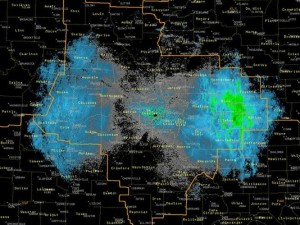By Beth Cericola, WWF Senior Development Officer
An African safari isn’t just a “trip.” It’s an adventure that demands commitments of time, treasure and spirit. For most of us, the promise of communing with herds of majestic and serene elephants or meditating on the hypnotic stripes of a zebra herd in motion are what pull us through the 15-hour flights typically required to get Americans to the African continent.
Nat Hab safaris are the best way to see Africa’s famous “Big Five.” These include the lion, leopard, black rhinoceros, African elephant, and Cape buffalo. But have you ever heard of Africa’s “Ugly Five”?
Meet the five (perhaps unfairly maligned) animals that have earned this moniker: the hyena, warthog, wildebeest, vulture, and marabou stork. And my recent Botswana Explorer adventure, we got to check all five mugs off our list!
1. Hyena
My first introduction to the hyena was as a scavenger, slinking and sauntering after a lion to snack on its leftovers. There’s a furtive quality to hyenas that can be a bit spooky. Indeed, we learned to always look behind us when gazing upon lions or wild dogs—turn around and you’d often see a lone hyena silently sitting atop a termite mound. Look back again and find that a single hyena has turned into a pack, waiting patiently for their turn for a meal.

© WWF-US / Jeff Muller
But as we sat together, watching the lion digest its dinner, we started to appreciate the soft spots dappling the hyenas’ coats. Their ear are big, soft and round. They defy easy labels, as they aren’t technically canines but are actually more closely related to felines. The complexity of a hyena is impressive, seductive and utterly captivating!
2. Warthog
The warthog is perhaps the easiest to love of the Ugly Five. Yes, they have odd wart-like bumps on their skulls and stout, gnarly tusks that don’t quite impress like those of the elephants. But you can’t help but smile as they lift their tails upright and trot through the dried grasses of the Okavango Delta. As you get closer, you start to notice their manes, which begin to look like blonde mullets flowing through the breeze. Warthogs have an alert energy that brightens up game drives. When your guide calls out “Pumba!” you’ll find yourself joining in with gusto.

© Martin Harvey / WWF
3. Wildebeest
The wildebeest was our group’s first introduction to the Ugly Five. Wildebeest are plentiful across Makgadikgadi Pans National Park, where they congregate in massive herds stretching along the Boteti River. At first glance, they look like any other antelope—until you start to clock the unusual curve of their snout and their outrageously-sized neck. The beard that seems to just drip off its jowls completes the odd spectacle.

© Thuto Moutloatse
Yet the wildebeest are happy neighbors to many more “beautiful” creatures. To see wildebeest grazing en masse side-by-side with zebra, elephant, and giraffe herds is a calming and peaceful experience. You might find yourself meditating on the wildebeest’s example of coexistence as you bounce along the sandy bed of the Boteti River—not a bad way to start a day.
4. Vulture
Most of us have encountered vultures here in the U.S. We’re used to thinking of vultures as “ugly” birds who help out with roadkill from time to time. Across Southern Africa, vultures play much the same role. In Botswana, the white-backed vulture reigns supreme, though its numbers are falling drastically. Their bald heads and necks make you instinctively turn away as if you’ve caught them naked.

Yet our group of travelers learned to love the vulture, especially as we roamed around looking for big cats and packs of African wild dogs. Nothing makes you stand to attention quite like the sight of a flock of vultures huddled in a tree. Their silent presence is the best indicator that a predator is below with a kill. We owed at least two lion sightings to our vulture friends. Nothing made us cheer quite like the vulture.
Marabou Stork
Without a doubt, the marabou stork is my favorite member of the ugly gang. When you encounter the storks, the first thing that strikes you is their incredible size. Marabou storks are huge; they can grow more than 4 feet tall. Needless to say, they command your attention at the waterhole. They also demand a second look with their red heads and pink wattles, bald except for some ridiculous scraggles of feathers. Combined with their massive bills that are frequently covered with leftovers from their scavenged meals, the overall effect is, admittedly, jarring.
Despite all this, the marabou stork is an elegant bird. They fold their wings behind their backs, looking very much like an elderly uncle standing in the back of a church service. They delicately and thoughtfully place their stilt-like hollow legs with an intention and grace that’s easy to admire. From afar, that is.

© Patrick Bentley / WWF-US
By the end of our time in Botswana, our group of travelers had come around on the Ugly Five. As you prepare for your own safari, consider adding warthogs or marabou storks to your list of “must-see” species. Perhaps you, too, will fall in love with these ugly creatures, which have charisma and power all their own!
Spot the Ugly Five on our 9-day Botswana Explorer adventure, 12-day Secluded Botswana Safari, or 12-day Botswana: Kalahari, the Delta & Beyond green season safari!


























